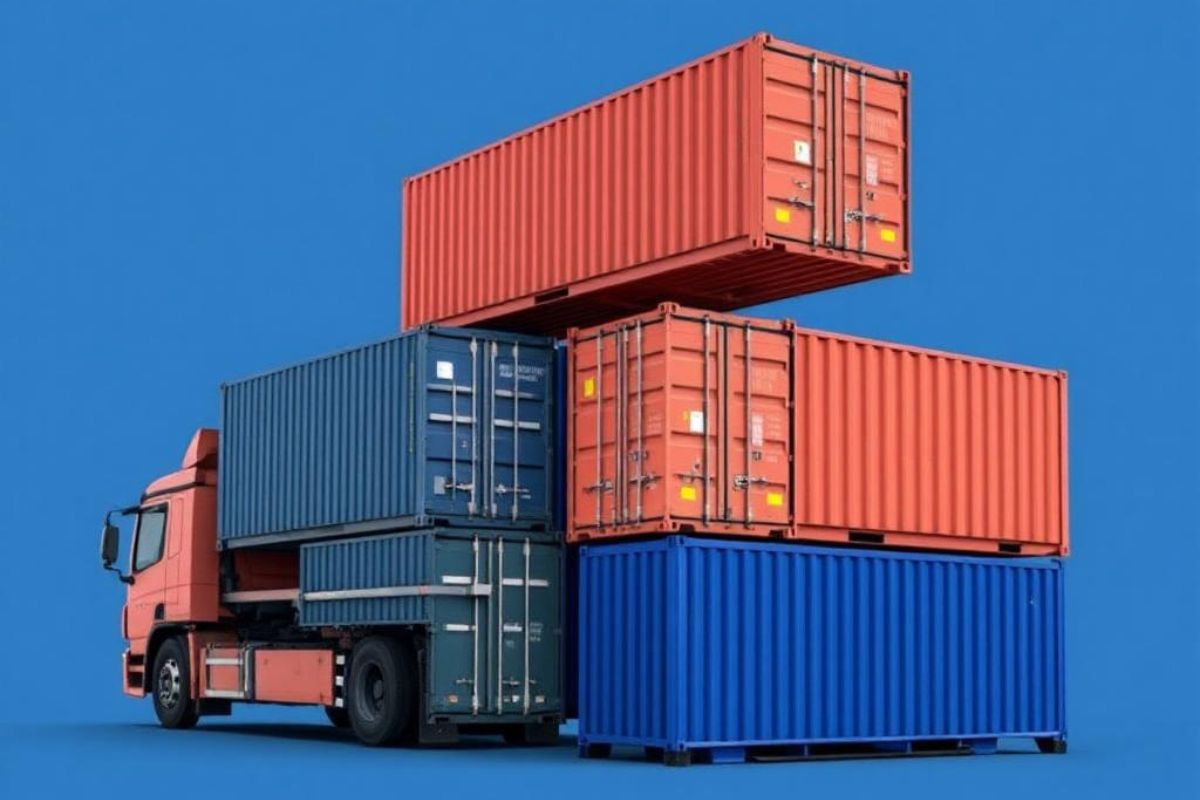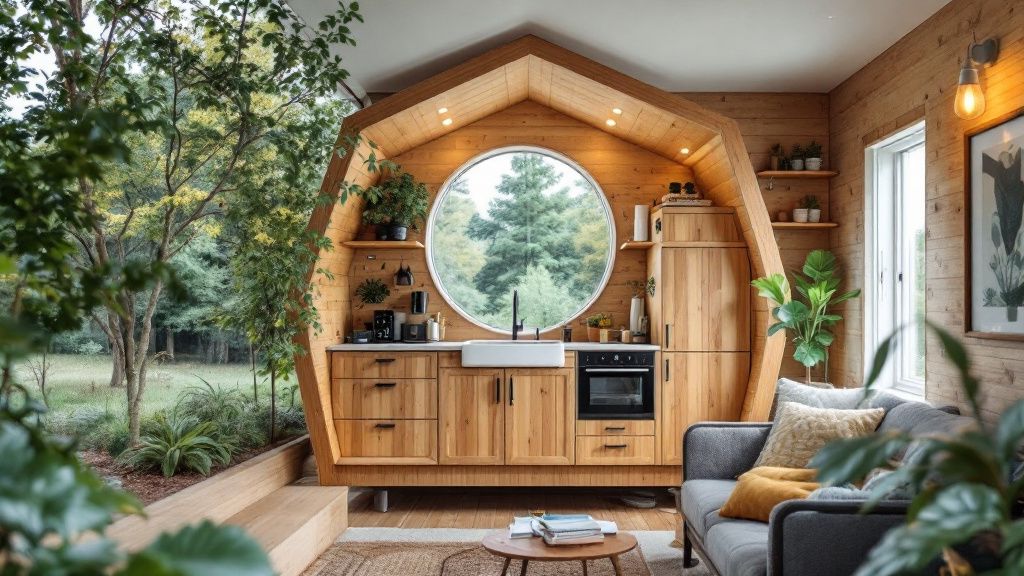Recently, alternative housing has become increasingly popular with the increase in construction prices, environmental issues, and the desire for simple lifestyles. Among the most sought-after alternatives are cabin houses and shipping containers. Although the two alternatives have innovative housing solutions, they contrast in composition, use, design, and long-term viability. Through this article, we will examine the differences in depth and analyze the advantages, disadvantages, and uses of each type of housing to assist prospective home dwellers in making informed choices.
What Are Container Homes?
Container houses, also referred to by the name, are houses made from steel shipping containers. Container houses capture the imagination of eco-friendly customers and individuals who like modern and industrial designs. Demand for houses built from storage containers has seen a considerable spike, mainly from urban dwellers and followers of the tiny house fad. Houses made of containers provide a cost-effective and flexible solution to traditional building. Proper planning in terms of design will make the containers functional and beautiful dwellings.
Features of Container Homes
-
Material: Repurposed steel shipping containers.
-
Speed of Construction: Quicker to build than traditional homes.
-
Modularity: Units can be stacked or arranged in various configurations.
-
Sustainability: Promotes recycling and reduces construction waste.
With the right architectural planning, these containers can be transformed into functional, stylish living spaces.
What Are Cabin Homes?
Cabins are usually made of wood and are usually found in rural or wooded landscapes. Cabins seem to have a connection to nature, simplicity, and history. While modern cabins might include modern aspects, they usually have traditional features like log construction, pitched roofs, and expansive porches.
Characteristics of Cabin Homes
-
Construction Material: Mainly wood, providing natural insulation.
-
Design Flexibility: Can be adapted to numerous layouts and architectural forms.
-
Energy Efficiency: Extremely efficient when insulated and designed correctly.
-
Longevity: With proper maintenance, wooden cabins last for decades.
Cabin houses are best suited for people who want a peaceful sanctuary, particularly in areas with mountains or forests. The classic style of the cabins suits vacation homes, and they also make perfect long-term dwellings.

Key Cabin and Container Home Differences
Both the cabin and the container home are alternatives to conventional housing but differ in some very significant ways.
1. Construction and Materials
Cabin-style houses have primarily natural building materials, including mostly wood. This creates a cozy, earthy ambiance, but necessitates regular maintenance to avoid fungus and bug damage. Conversely, shipping containers have long-lasting steel construction, resistant to worms and rot, but might need to be insulated to weather hot and cold temperatures.
2. Design Aesthetic
Cabins have a rustic charm and seem to fit into the landscape naturally. Container houses, on the other hand, have a modern, industrial look and feel with lots of open areas and streamlined lines. Whether the two appeal to the homeowner will depend on lifestyle and personal preference.
3. Cost and Accessibility
Container houses are less expensive in the short term when they utilize salvaged containers. Cabin houses are very variable in price depending on location, size, and customization. Houses made from containers cut down the timeline of construction considerably and have the ability to offer sooner occupancy.
4. Environmental Considerations
Both of these housing solutions reuse industrial materials, saving on waste and reducing carbon footprints. Cabin houses, when they come from sustainable forests, also have eco-friendly advantages. Both of these can be equipped with solar panels, rainwater harvesting systems, and energy-efficient appliances to allow for off-grid life.
Comparing Shipping Container Storage and Self-Storage
When considering housing based on storage origins, it's helpful to understand the distinction between comparing shipping container storage and self-storage. This comparison can offer insight into the structural integrity and adaptability of container-based buildings.

Shipping Container Storage
-
Built to withstand heavy loads and harsh environments.
-
Secure and weather-resistant.
-
Easily transportable.
Self-Storage Units
-
Typically made from lighter materials.
-
Intended for stationary use.
-
Often less secure and durable.
When converted into homes, shipping container storage units offer a sturdy and mobile solution, unlike self-storage, which lacks structural strength for residential adaptation. This comparison underscores the durability of houses built from storage containers.
Customization and Design Options
One of the most alluring parts of cabin and container houses, however, is the possibility to customize the layouts and designs. Cabin houses can be given vaulted ceilings, loft areas, stone fireplaces, and wrap-around decks. Container houses, although built in a rigid format, may be joined or stacked to have interesting, contemporary floor plans.
They have been getting more innovative in the design of containers as they incorporate rooftop gardens, skylights, and sophisticated home automation systems. Such versatility suits tech-oriented homeowners and eco-conscious individuals who value greener living.
Building Regulations and Zoning
Prior to starting a construction project, it’s essential to examine the area’s regulations. Certain areas have more relaxed attitudes toward the use of containers, while others establish zoning restrictions or beauty codes. Cabin houses, as more conventional, generally fit into rural and residential zones. Yet, they also need to be in compliance with contemporary building standards of safety and efficiency.
Maintenance and Durability
They need to be maintained periodically in the form of staining, pest control, and roof maintenance in order to last long. Wood is prone to dampness, and if not dealt with, it may cause mold or structural damage.

Steel container homes are low maintenance when it comes to pests and structural breakdown. With the exception of protection from rust in moist climates, they need to be treated. Insulation of the units to exclude condensation should also be done.
Resale Value and Investment
Both cabin and container homes can appreciate in value, particularly when located in desirable areas. Cabins tend to have broader appeal, especially in scenic vacation destinations. Container homes attract a niche market of eco-conscious and minimalist buyers.
As awareness grows, houses built from storage containers are increasingly being viewed as long-term investments, especially in urban or off-grid areas.
Selecting the Ideal Home to Fit Your Lifestyle
The choice between a cabin house and a shipping container house depends on personal priorities: appearance, affordability, environmental concerns, and purpose. Cabins have traditional beauty and charm and suit nature enthusiasts and traditionalists. Container houses have cutting-edge style and practicality, and appeal to modernists and environmentalists.
For the curious about the innovation of container dwellings, the popularity of houses made from shipping containers marks a significant transformation in the perception of modern living. At the same time, the enduring beauty of cabins holds its position in the hearts of individuals desiring a peaceful retreat.
Both alternatives provide unique advantages and reflect the cutting edge in 21st-century alternative housing.






Share: